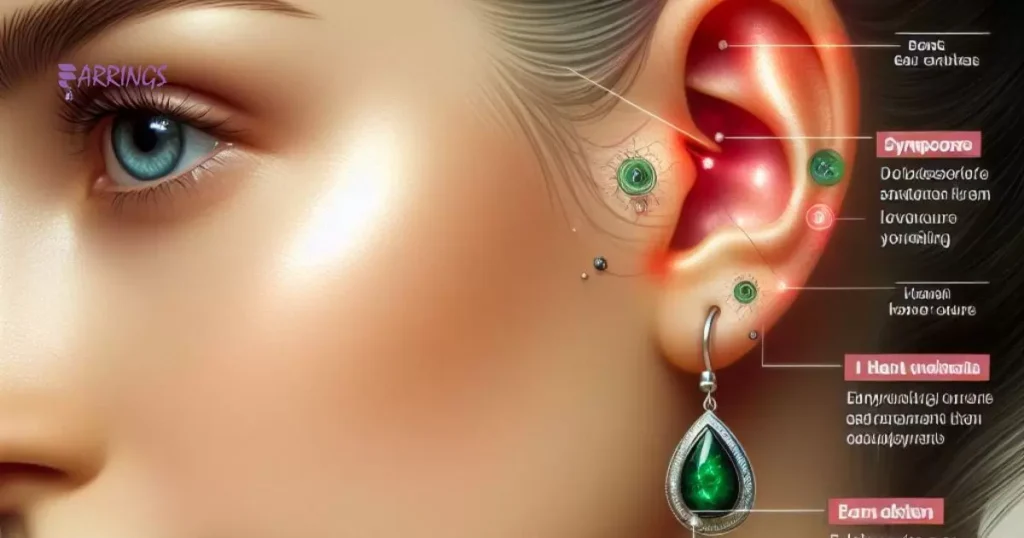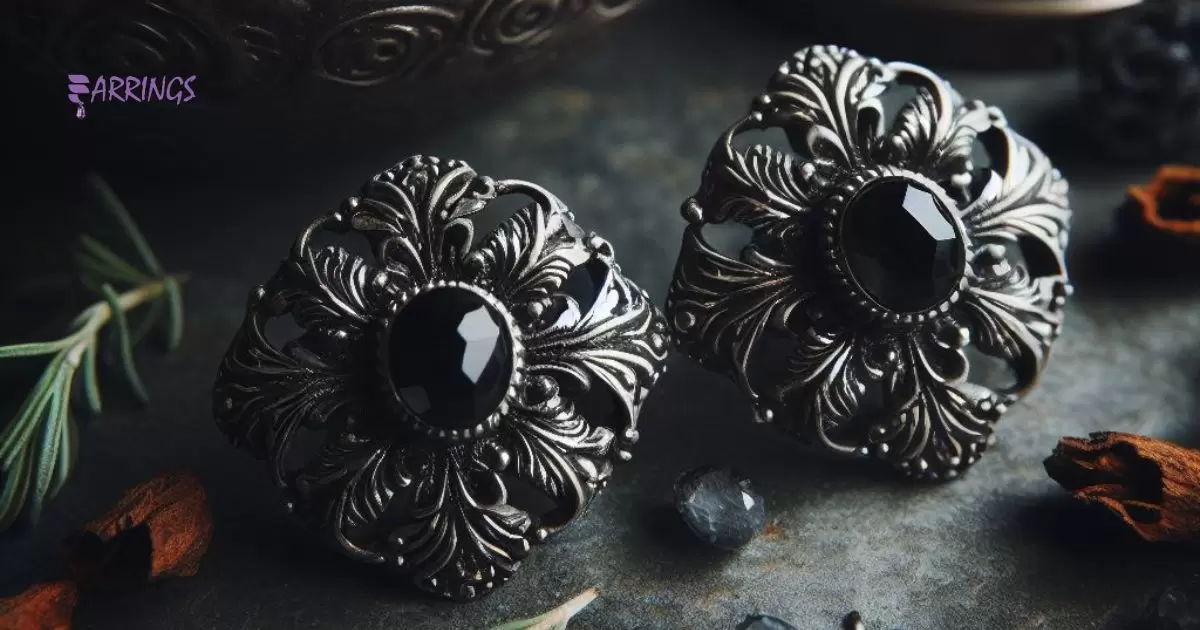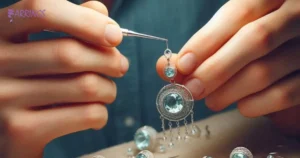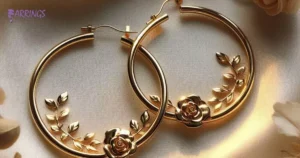Earrings turn black due to oxidation, tarnish from air and body oils. Preventing tarnish requires proper storage, cleaning, and metal care. Certain metals like silver easily tarnish. Gold resists tarnishing better than silver. Regular cleaning restores shine and prevents black buildup.
It’s frustrating when earrings lose their shine and turn an unsightly black. why do my earrings turn black? Metals react with air and oils, causing tarnish. But don’t fret! With proper care, you can keep your earrings gleaming. Let’s explore the reasons and solutions.
Earrings are in style now, but the main culprits behind them turning black are oxidation and tarnish. Oxidation occurs when metals react with oxygen in the air, while tarnish builds up from exposure to body oils, sweat, and other substances. Certain metals like silver are more prone to tarnishing.
Key Takeaways
- Earrings turn black due to oxidation and reactions with substances like sulfur compounds and skin oils.
- Store earrings properly, clean them regularly, and avoid harsh chemicals to prevent tarnishing.
- Choose high-quality materials and consider applying a protective coating for longer-lasting earrings.
There Are Some Primary Causes Of Earrings Turning Black?
Earrings turn black due to oxidation from sulfur compounds and skin oils, forming a tarnish layer. To prevent this, store and clean earrings properly, and avoid harsh chemicals. Wearing multiple earrings in one ear, like 3 Earrings In One Ear, may increase contact with oils, potentially accelerating tarnishing.
Oxidation
One primary cause of earrings turning black is oxidation. When metals like silver and copper come into contact with air, they undergo oxidation, forming a layer of tarnish on the surface. This tarnish appears dark gray or black, altering the appearance of the earrings.
Chemical Reactions
Chemical reactions play a crucial role in causing earrings to turn black. When metals like silver and copper come into contact with substances in the environment, such as oxygen and sulfur compounds, they undergo oxidation. This chemical process leads to the formation of a dark gray or black tarnish on the surface of the earrings.
Poor Quality Or Plated Earrings
| Poor Quality Earrings | Plated Earrings |
| Prone to tarnishing | May tarnish over time |
| Often made from inferior materials | Outer layer can wear off |
| Less durable and may break easily | Affordable option |
| Not suitable for sensitive skin | Can be less expensive than solid metal earrings |
| Require more frequent replacement | Requires careful maintenance to prevent tarnishing |
Poor quality or plated earrings are more prone to turning black due to impurities in the metal or lack of protective coatings. These earrings may tarnish more quickly when exposed to factors like air, skin oils, and sulfur compounds. To avoid this, opt for higher-quality materials and ensure proper care and maintenance of your earrings.
The Body Chemistry?
The body’s natural chemistry also plays a role in earrings turning black. Skin oils and sweat contain compounds that accelerate tarnishing. When earrings come into contact with these substances, they contribute to the formation of tarnish. To mitigate this, clean earrings regularly and consider choosing materials less prone to tarnishing.
Cleaning Techniques For Silver Jewelry

Cleaning silver jewelry requires simple techniques. One method involves creating a paste of baking soda and water, gently rubbing it onto the jewelry with a soft cloth, then rinsing and drying thoroughly.
Alternatively, you can soak silver jewelry in a mixture of warm water and mild dish soap, gently scrubbing with a soft brush, and then drying carefully to prevent tarnish. To maintain the shine of silver jewelry, avoid using harsh chemicals or abrasive cleaners. Instead, stick to gentle cleaning methods and regular maintenance.
Store silver jewelry in a dry, airtight container when not in use to minimize exposure to air and humidity, which can accelerate tarnishing. male both ears pierced With proper care, your silver jewelry can maintain its beauty and luster for years to come.
Determining The Metal Type Of Your Earrings
To determine the metal type of your earrings, start by checking for markings or stamps indicating the metal’s purity. Use a magnifying glass if needed. If there are no markings, consider the color and appearance of the metal. For example, silver typically has a bright, shiny appearance when polished, while copper has a reddish-brown hue.
Metal Properties
metal properties can help in identifying the type of metal in your earrings. Different metals have distinct characteristics, such as color, luster, and density. For instance, gold is known for its yellow color and high density, while silver has a bright, reflective surface.
Chemical Tests
Chemical tests can help determine the metal type of your earrings accurately. One common test is the nitric acid test, where a small amount of acid is applied to the metal to observe its reaction. Another method involves using a magnet to check for magnetic properties, which can indicate certain metals like iron or steel.
Avoiding Common Mistakes
When determining the metal type of your earrings, avoid common mistakes that could lead to inaccurate conclusions. Don’t rely solely on visual cues like color, as some metals may have similar appearances. Similarly, avoid assuming the metal type based solely on the earring’s price or where it was purchased.
Instead, use a combination of methods such as markings, appearance, and if needed, consult a professional jeweler for assistance. Additionally, when conducting chemical tests, ensure you follow safety precautions and handle acids or other testing materials carefully to avoid accidents or damage to your earrings.
Storing Your Earrings Properly

Storing your earrings properly is essential for preventing tarnishing. Keep them in a dry, airtight container when not in use to minimize exposure to air and humidity. This helps slow down the oxidation process that leads to tarnish formation.
Consider storing earrings individually or using jewelry pouches to prevent them from scratching against each other, which can also contribute to tarnishing over time. By taking these simple steps, you can maintain the quality and appearance of your earrings for longer periods.
Protective Coatings For Extra Protection
To provide extra protection for your earrings, consider applying protective coatings. Clear nail polish is a simple and effective option for creating a barrier against tarnishing. Apply a thin layer of nail polish to the surface of your earrings and allow it to dry completely before wearing them.
This coating can help prevent contact with substances that contribute to tarnishing, prolonging the appearance and lifespan of your earrings. Additionally, some jewelers offer professional coatings specifically designed to protect jewelry from tarnishing and corrosion.
Replacing Discolored Earrings
When earrings become discolored beyond repair, it’s time to consider replacement. Start by determining if the discoloration is superficial or if it has penetrated the metal. If it’s surface-level, cleaning and polishing might restore their appearance.
If the discoloration persists, it’s best to replace the earrings with new ones made from higher-quality materials to prevent future tarnishing issues. Remember to store your new earrings properly and clean them regularly to maintain their shine and durability.
Can Tarnished Earrings Cause Infection?

Tarnished earrings can potentially cause infections if they irritate the skin or if there is an open wound. The tarnish itself is unlikely to directly cause an infection, but it may contain bacteria or other harmful microorganisms that could lead to irritation or infection if they come into contact with broken skin.
Prolonged exposure to tarnished earrings may cause skin irritation, which could increase the risk of infection if the skin becomes compromised. It’s essential to keep earrings clean and free from tarnish to minimize the risk of skin irritation and potential infections.
Frequently Asked Questions
How Do I Keep My Earrings From Turning Black?
Store earrings in a dry place, clean with mild soap, avoid harsh chemicals, choose quality materials like stainless steel or gold.
Why Do My Earrings Go Black And Smell?
Earrings go black and smell due to oxidation from oxygen and sulfur. This is common in metals like silver and copper.
Is It Ok To Wear Tarnished Earrings?
Yes, it’s generally safe to wear tarnished earrings, but it’s best to clean them first to prevent skin irritation.
Conclusion
Preserving your earrings’ beauty is easy with the right care. Store them properly, away from air and moisture. Clean them regularly with a soft cloth. Avoid harsh chemicals and abrasives. Coat with anti-tarnish products for added protection.
Shiny, spotless earrings elevate any outfit and boost confidence. With a few simple steps, you can prevent tarnishing. Invest in quality metals that resist oxidation. Embrace your sparkling accessories without worrying about discoloration.











